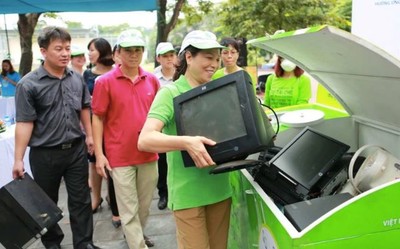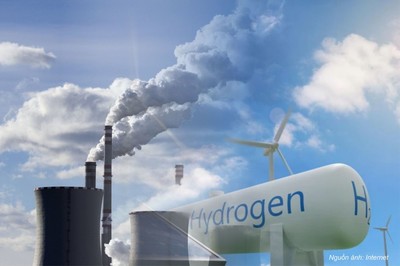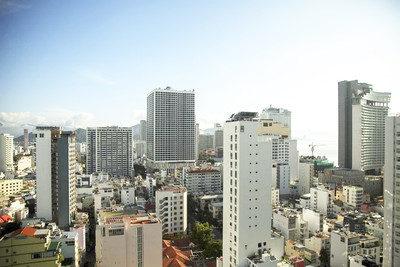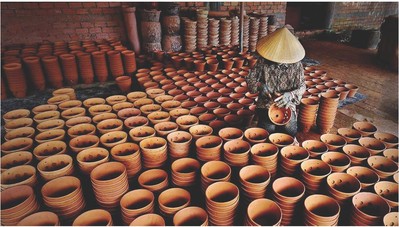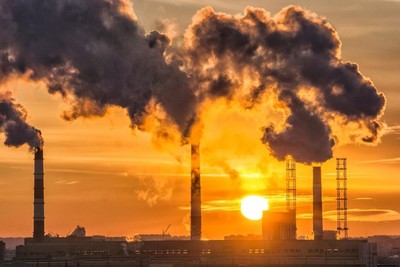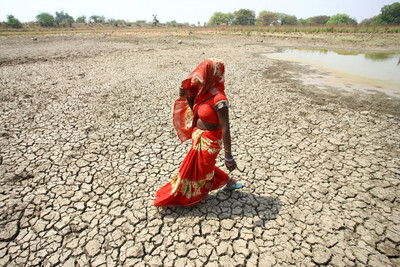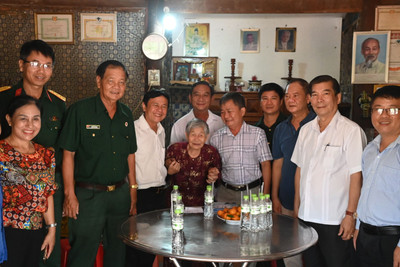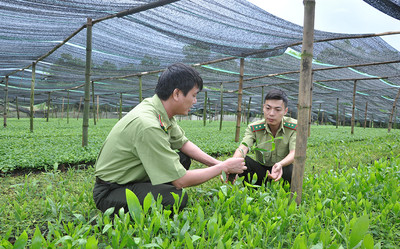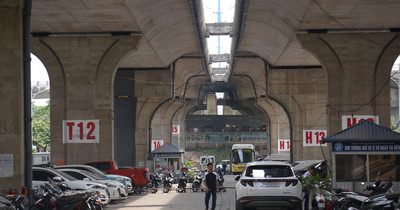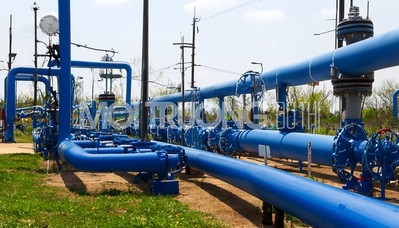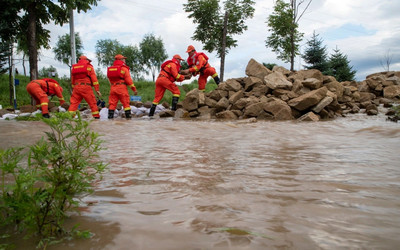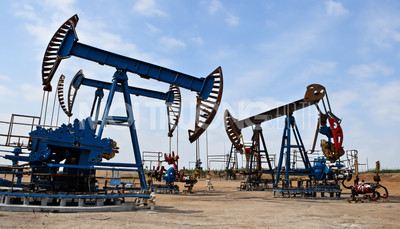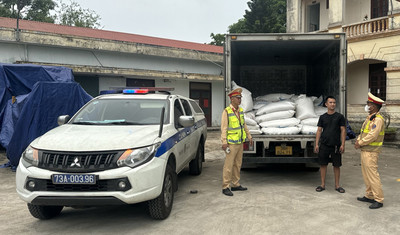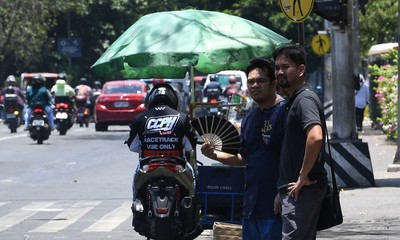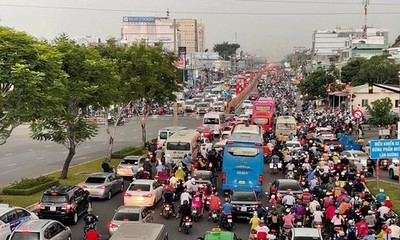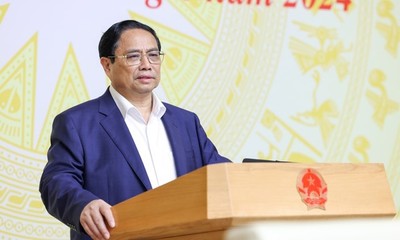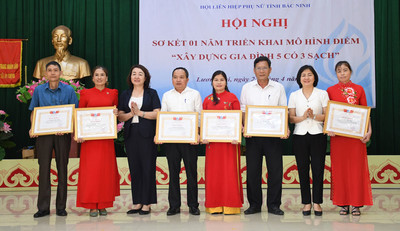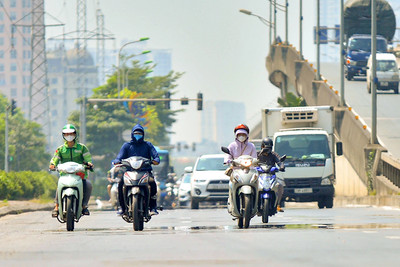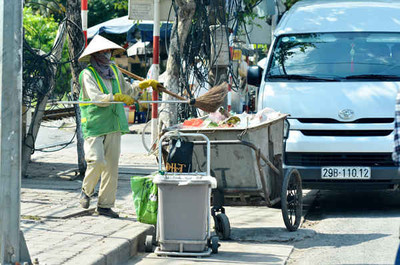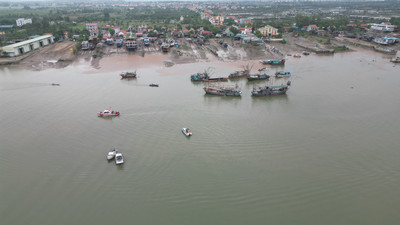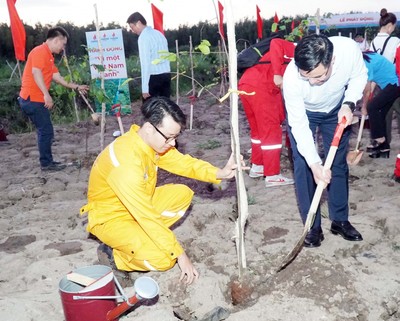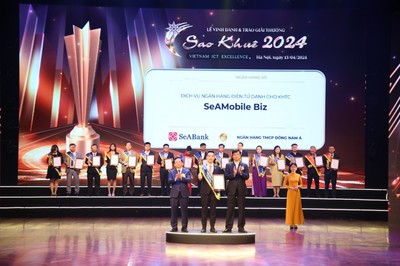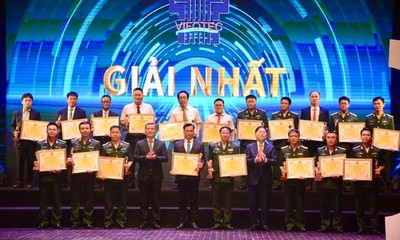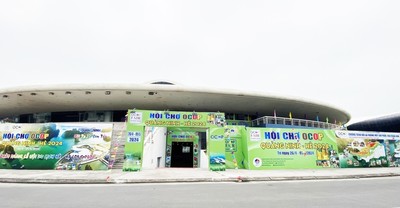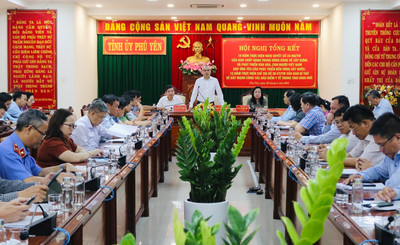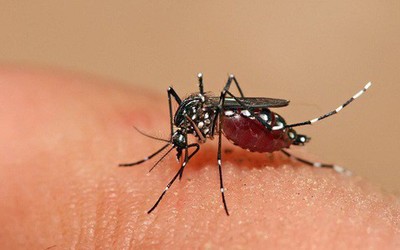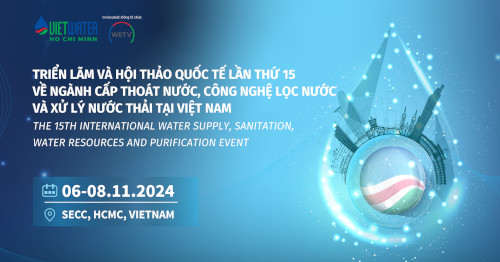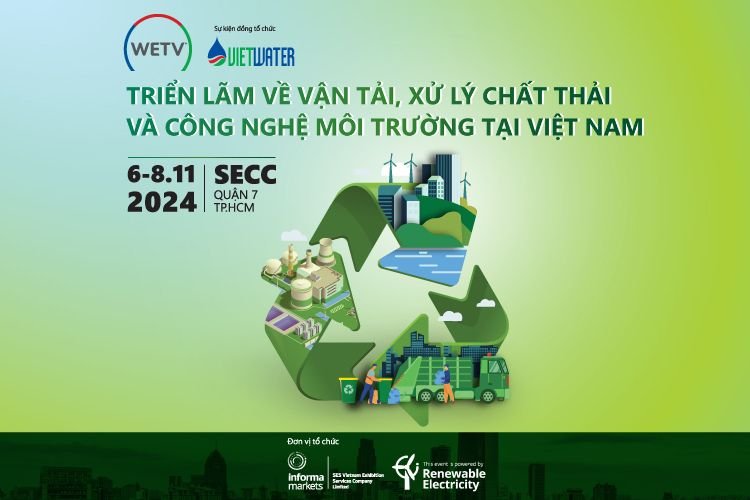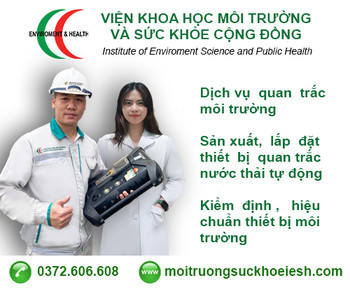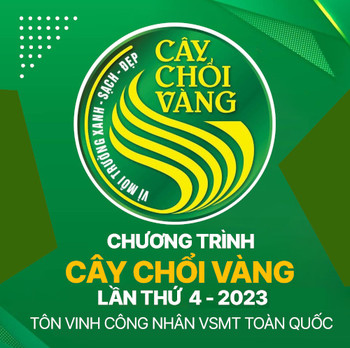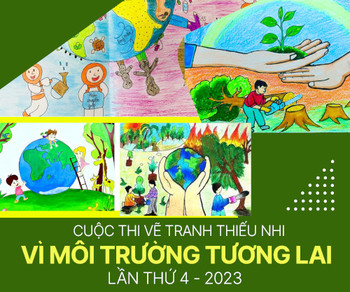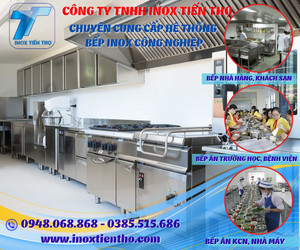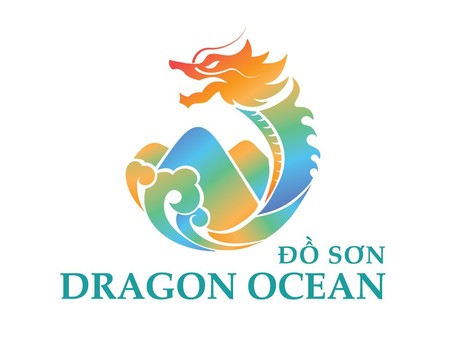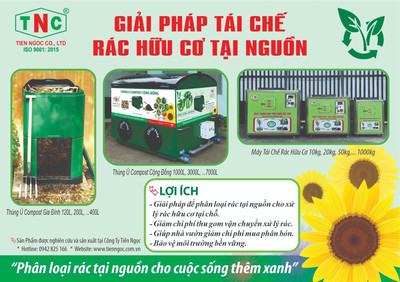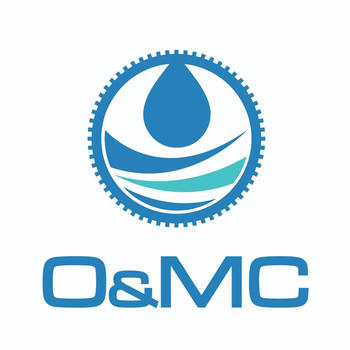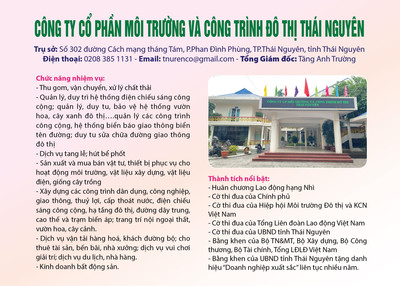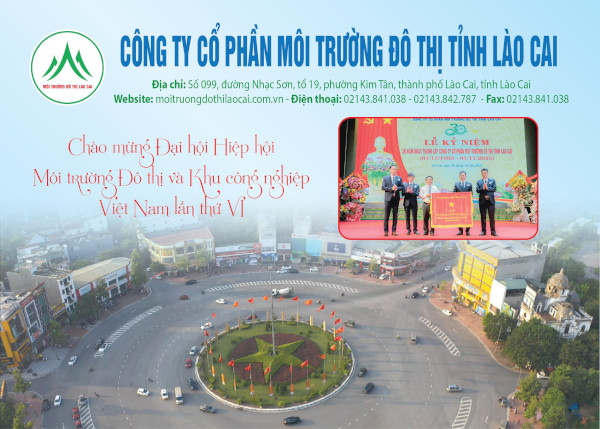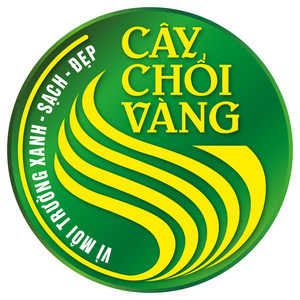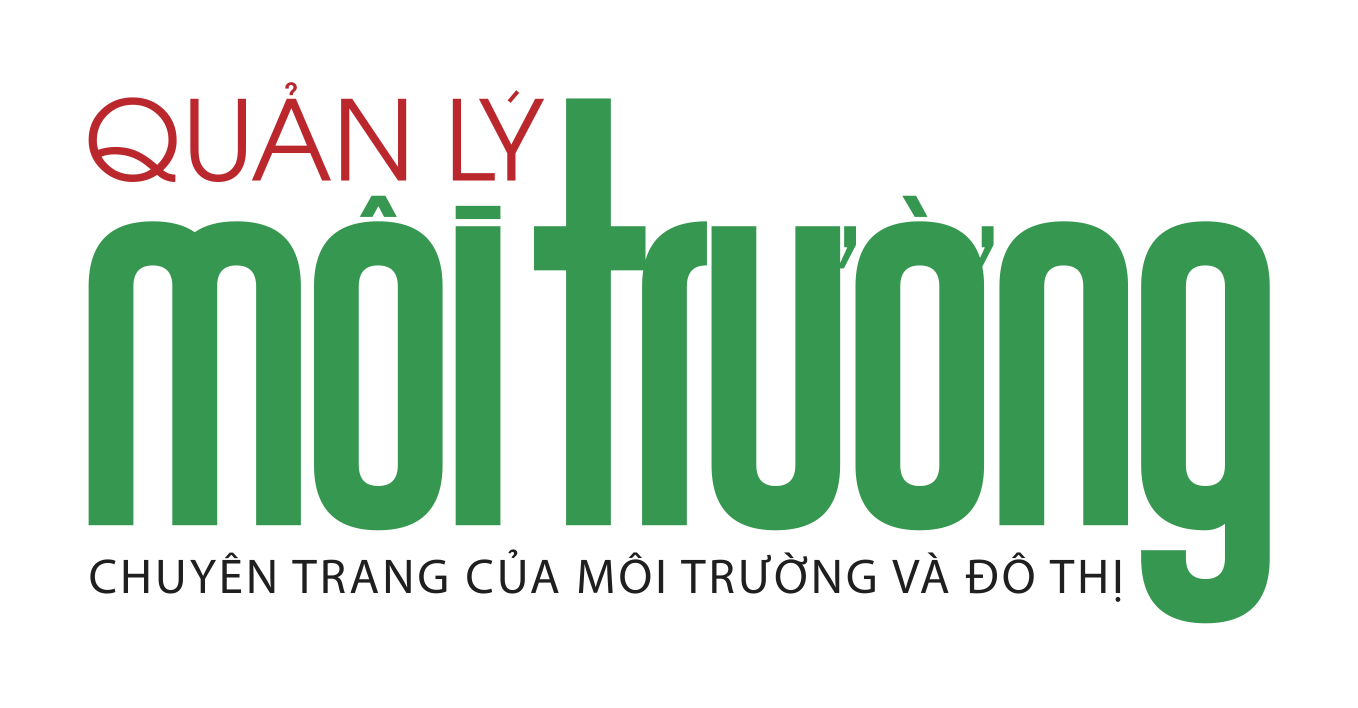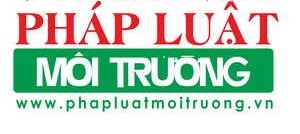Công bố quốc tế lĩnh vực môi trường số 7-2022
Trân trọng giới thiệu tới quý độc giả Công bố Quốc tế lĩnh vực môi trường số 7-2022 với các công trình nghiên cứu của các nhà khoa học nổi tiếng từ rất nhiều quốc gia khác nhau và đã được công bố trên những tạp chí uy tín thế giới.
Công bố Quốc tế lĩnh vực môi trường số 7-2022 sẽ có 18 bài nghiên cứu về quản lý môi trường, 15 bài về môi trường đô thị và 15 bài về môi trường khu công nghiệp. Đặc biệt trong số 18 bài nghiên cứu về quản lý môi trường có bài nghiên cứu với chủ đề "Khả năng chi trả được sẽ thúc đẩy phổ biến năng lượng tái tạo: Trường hợp của thị trường điện Nhật Bản”, được công bố trên trang website khoa học uy tín Journal of Cleaner Production số 330, ngày 1/1/2022.
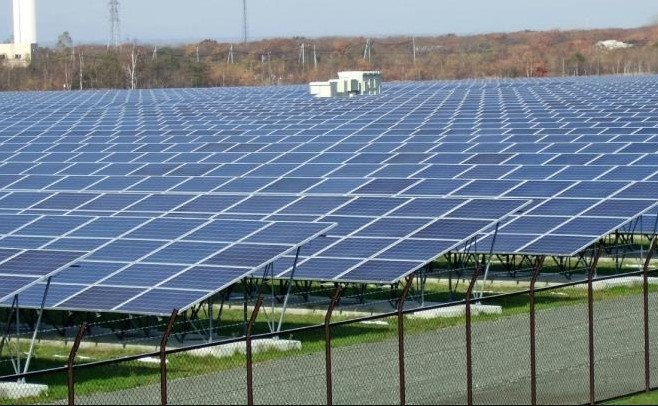
Trong phần tóm tắt, các tác giả cho biết, nghiên cứu này nhằm mục đích mô phỏng mức độ sẵn sàng chi trả (WTP) cho năng lượng tái tạo (RE) ở Nhật Bản trong các điều kiện kinh tế xã hội khác nhau và phân tích sâu hơn quá trình thâm nhập của NLTT do WTP thúc đẩy vào lĩnh vực năng lượng của Nhật Bản từ năm 2015 đến năm 2050.
Phân tích được thực hiện bằng cách kết hợp WTP mô phỏng cho NLTT vào một mô hình lập kế hoạch phát điện tối ưu đa vùng, áp dụng mục tiêu phát thải CO2 giữa thế kỷ của Nhật Bản.
Kết quả cho thấy tổng WTP ở 10 khu vực tổng hợp vào năm 2050 sẽ tăng ở các mức độ khác nhau so với giá trị ban đầu vào năm 2015 trong điều kiện kinh tế xã hội đặc thù của Nhật Bản là kinh tế tăng trưởng dần nhưng dân số giảm. Việc gia tăng WTP như vậy sẽ tạo cơ hội cho việc mở rộng NLTT sang hỗn hợp phát điện, cho phép tăng tỷ trọng phát điện bằng năng lượng mặt trời và năng lượng gió từ 0,7% lên 4,3 – 9,9% vào năm 2050.
Với việc tích hợp NLTT do WTP thúc đẩy ngành điện phát triển với mục tiêu đạt được mức giảm phát thải khả thi khoảng 8% vào năm 2015 và giảm khoảng cách chi phí cho việc chuyển đổi hỗn hợp phát điện từ mục tiêu cơ bản sang mục tiêu không phát thải carbon. Tất cả những kết quả này cho thấy vai trò quan trọng của WTP đối với sự thâm nhập của NLTT vào hỗn hợp phát điện trong việc đạt được một hệ thống điện hoàn toàn khử cacbon.
Dưới đây là Công bố quốc tế lĩnh vực môi trường số 7-2022 với những nội dung chính như sau:
Về quản lý môi trường
- Khung xác suất để đánh giá rủi ro sinh thái của các chất gây ô nhiễm đáng lo ngại: Ứng dụng cho hệ thống hồ của Canada.
- Đánh giá rủi ro sức khỏe do vết kim loại độc hại gây ra trong nước máy: Phát triển nguyên tắc vòi.
- Các yếu tố ảnh hưởng đến hiệu quả chuyển đổi xanh ở các thành phố dựa trên tài nguyên khoáng sản của Trung Quốc: Phân tích phương pháp dựa trên IPAT-E và PLS-SEM.
- Mô hình hóa nền kinh tế sinh học: Các cách tiếp cận mới nổi để giải quyết các nhu cầu về chính sách.
- Phân bổ nguồn PM2.5 trong các đợt khói mù ở Thượng Hải theo mô hình PMF với PAHs.
- Làm thế nào để cải thiện hiệu quả phân bổ vốn kết nối năng lượng toàn cầu? Phân tích từ góc độ không đồng nhất về không gian và các yếu tố thúc đẩy.
- Khả năng chi trả được thúc đẩy phổ biến năng lượng tái tạo: Trường hợp của thị trường điện Nhật Bản.
- Lập kế hoạch đa thời kỳ cho mạng lưới hệ thống hậu cần ngầm tích hợp để thu gom rác thải đô thị tự động và thu gom rác thải đô thị: Một nghiên cứu điển hình.
Về môi trường đô thị
- Các cấu trúc chức năng của cộng đồng vi sinh vật và các đặc tính hóa học đã chỉ ra các cơ chế và nguy cơ tiềm ẩn của việc xử lý sinh thái sông đô thị.
- Các hydrocacbon thơm đa vòng trong bụi đường mịn từ một thành phố sử dụng than: Phân bố không gian, chẩn đoán nguồn và đánh giá rủi ro.
- Sự tồn tại và loại bỏ các hợp chất hữu cơ dạng vết trong hệ thống xử lý nước thải tập trung và phi tập trung.
- Mối liên hệ giữa tỷ lệ tử vong do COVID-19 và lượng phát thải PM2.5 ở các thành phố nông thôn và thành phố quy mô vừa khi xem xét mật độ dân số, các sự kiện bụi và tốc độ gió.
- Tái sinh và mô hình hóa nhựa trao đổi ion hỗn hợp loại bỏ và thu hồi phốt pho sau khi hoạt động lâu dài với nước thải đô thị.
- Đặc điểm của PAH trong không khí và các kim loại liên quan đến các phân đoạn PM10 được thu thập từ một khu vực đô thị của Sri Lanka và tác động lên các tế bào biểu mô đường thở.
- Ảnh hưởng của loại hình sử dụng đất và mức độ đô thị hóa đến việc phân phối dược phẩm và các sản phẩm chăm sóc cá nhân và đánh giá rủi ro ở sông Beiyun, Trung Quốc.
- Các silicas trung tính SBA-15 được chức năng hóa để xúc tác quang không đồng nhất hướng tới loại bỏ CECs khỏi nước thải đô thị thứ cấp.
- Quá trình nitrit hóa một phần, anammox và khử nitrat hóa đồng thời để xử lý nước thải đô thị mô phỏng trong lò phản ứng lọc sinh học một giai đoạn.
- Đặc điểm phát thải của dioxin trong quá trình nung quặng sắt Đồng thiêu kết với lò đốt chất thải rắn đô thị tro bay trong nồi thiêu kết.
Về môi trường khu công nghiệp
- Cực dương oxit kim loại hỗn hợp được sử dụng để phân hủy điện hóa của nước thải công nghiệp hỗn hợp thực.
- Sinh khối làm nguồn sản xuất hydrochar và than sinh học để thu hồi phốt phát từ nước thải: Đánh giá về những thách thức, thương mại hóa và viễn cảnh tương lai.
- Những tiến bộ gần đây về cacbon thủy tinh thể lưới biến tính để xử lý nước và nước thải.
- Đặc điểm hóa học toàn diện của chất hữu cơ hòa tan trong nước thải của nhà máy lọc dầu nguồn điểm điển hình.
- Công nghệ môi trường và xử lý nước thải: Các chiến lược để đạt được môi trường bền vững.
- Tiến bộ và thách thức của việc loại bỏ chất gây ô nhiễm khỏi nước thải bằng sinh khối vi tảo.
- Phân hủy sinh học phenol và p-cresol tăng cường để xử lý nước thải trong các lò phản ứng sinh học cột đóng gói ngược dòng.
- Khảo sát khả năng lưu giữ amoni bằng màng lọc nano gốm graphene oxit để xử lý nước thải bán dẫn.
- Xúc tác quang nước thải nhuộm trực tiếp bằng cách sử dụng titanium dioxide cố định trên chất nền cố định.
- Tương quan giữa cộng đồng vi khuẩn và động vật cổ với hiệu quả của nhà máy xử lý nước thải luyện cốc sử dụng quy trình kỵ khí-thiếu khí-ôxy trong ngành than.
Sau đây là tên và phần tóm tắt các bài nghiên cứu bằng tiếng Anh:
QUẢN LÝ MÔI TRƯỜNG
1. Probabilistic framework for assessing ecological risk of Contaminants of Emerging Concern: Application to a Canadian lake system
Chemosphere, Volume 287, Part 1, January 2022, 131910
Abstract
Contaminants of Emerging Concern (CECs) in natural water pose risks to ecosystems. The concentration of CECs varies spatially and temporally, and their estimated ecotoxicities differ widely by toxicological studies. This study extensively reviewed literature on ecological risk assessment and proposed a probabilistic framework for assessing ecological risk and its uncertainties (aleatory and epistemic). The framework integrated Adverse Outcome Pathway in risk assessment and was applied to a Canadian lake system for seven CECs: salicylic acid, acetaminophen, caffeine, carbamazepine, ibuprofen, drospirenone, and sulfamethoxazole. Altogether 264 water samples were collected and analyzed from 15 sites May 2016 to September 2017. Phytoplankton, zooplankton, and fish were also sampled and analyzed. The results show ecological risk estimates (Risk Quotient, RQ) varied considerably indicating a range of uncertainty. Based on the conservative estimate, the central tendency estimate of the ecological risk of mixture compounds was medium (RQ = 0.6) including drospirenone. However, the reasonably maximum estimate of the risk was high (RQ = 1.4) for mixture compounds including drospirenone. The high risk is primarily due to drospirenone as its individual risk was high (RQ = 1.1) to fish. The specific site and time of high drospirenone exposure was identified for implementing control measures. Classification of ecotoxicity values based on environmental parameters such as climate and water quality, can reduce uncertainty in the risk estimate.
2. Long-term air pollution exposure and decreased kidney function: A longitudinal cohort study in Bangkok Metropolitan Region, Thailand from 2002 to 2012
Chemosphere, Volume 287, Part 1, January 2022, 132117
Abstract
Background
Kidney dysfunction is considered a cardiovascular risk factor. However, few longitudinal studies have examined the effects of air pollution on kidney function. We evaluated associations between long-term air pollution exposure and estimated glomerular filtration rate (eGFR) using data from a cohort of the Electricity Generating Authority of Thailand (EGAT) study in Bangkok Metropolitan Region, Thailand.
Methods
This longitudinal study included 1839 subjects (aged 52–71 years in 2002) from the EGAT1 cohort study during 2002–2012. eGFR, based on creatinine, was measured in 2002, 2007, and 2012. Annual mean concentrations of air pollutants (i.e., particulate matter with an aerodynamic diameter ≤10 μm (PM10), ozone (O3), nitrogen dioxide (NO2), sulfur dioxide (SO2), and carbon monoxide (CO)) prior to a measurement of creatinine were assessed with the ordinary kriging method. Mixed-effect linear regression models were used to assess associations between air pollutants and eGFR, while controlling for potential covariates. eGFR values are expressed as percent change per interquartile range (IQR) increments of each pollutant.
Results
Lower eGFR was associated with higher concentrations of PM10 (−1.99%, 95% confidence interval (CI): −3.33, −0.63), SO2 (−4.89%, 95%CI: −6.69, −3.07), and CO (−0.97%, 95%CI: −1.96, 0.03). However, after adjusting for temperature, relative humidity, PM10, and SO2, no significant association was observed between CO and eGFR.
Conclusions
Our findings support the hypothesis that long-term exposure to high concentrations of PM10 and SO2 is associated with the progression of kidney dysfunction in subjects of the EGAT cohort study.
3. Health risk assessment induced by trace toxic metals in tap drinking water: Condorcet principle development
Chemosphere, Volume 286, Part 2, January 2022, 131821
Abstract
Acute exposure to trace metals (TMs) in water is hazardous to human health. The average concentrations (Cavg.) and carcinogenic (CAR) and non-carcinogenic (non-CAR) risks of eight TMs to World Health Organization's (WHO) guidelines and national standard limits (NSLs)were determined. The Cavg. and (the range) of As, Hg, Cd, Pb, Co, Cr, Ni, and Zn were measured as 4.29 ± 0.57 μg L−1 (1.12–10.27 μg L−1), 0.22 ± 0.10 μg L−1 (ND-1.05 μg L−1), 0.31 ± 0.18 μg L−1 (ND-1.80 μg L−1), 4.66 ± 0.32 μg L−1 (0.10–14.22 μg L−1), 24.61 ± 4.65 μg L−1 (3.11–67.25 μg L−1), 16.86 ± 5.54 μg L−1 (5.12–34.61 μg L−1), 14.07 ± 4.37 μg L−1 (3.79–31.39 μg L−1), and 268.42 ± 75.82 (87.29–561.22 μg L−1), respectively. The Cavg. of Co and Hg exceeded the WHO and NSLs. The non-CAR risk assessment was used to order the TMs according to the total target hazard quotient (TTHQ) As > Pb > Cr > Co > Zn > Hg > Ni > Cd. None of the investigated age groups are at risk As there is a low Cavg of all trace metals (i.e., the THQ is > 1). The age groups were ranked based on THQ and incremental lifetime cancer risk (ILCR) As < 1 year, >1–10 years, > 11–19 years, and > + 20 years. The ILCR of As for all the age groups was >10−4, whereas for Pb it was <10−6. Cumulative carcinogenic risk (CCR) for As and Pb was at a safe threshold risk (>10−4) for all the age groups.
4. Factors influencing green transformation efficiency in China's mineral resource-based cities: Method analysis based on IPAT-E and PLS-SEM
Journal of Cleaner Production, Volume 330, 1 January 2022, 129783
Abstract
China's mineral resource-based cities (MRBCs) face developmental difficulties, including environmental degradation, resource depletion, and economic growth. Therefore, there is an urgent need to explore factors affecting the green transformation efficiency of MRBC, which are expected to provide theoretical support and practical guidance for the formulation of scientific and effective transformation strategies. Based on the IPAT-E model and DEMATEL-ISM method, present study identifies and extracts four influencing factors: population, affluence, technology, and energy, and a multilevel systematic structural model of influencing factors was established. Meanwhile, the partial least squares method was employed to establish a structural equation model using data obtained from 110 MRBCs in China between 2009 and 2018. Factors influencing green transformation efficiency in different groups of MRBCs and the heterogeneity of these cities were analyzed. The results showed that affluence and energy had positive and negative direct and significant effects on transformation efficiency at the national level, respectively. At the same time, technology and population played significant positive roles through different intermediaries. Among them, the negative effect of energy was maximum, and the positive effect of technology was significant. From a regional perspective, the impact of affluence on the east, middle, west, and northeast was significant. The east had the greatest positive effect, whereas the west direction was negative. Furthermore, energy had a significant adverse effect on the central, western, and northeastern regions; however, its influence on the eastern region was not significant. The total indirect effects of technology on the east, middle, and northeast were significantly positive, but the impact on the west was not significant. Similarly, the indirect effect of the population was significant, although negative in the West. Based on city types, the influence of affluence on coal, oil, non-ferrous, and ferrous cities was significantly positive, among which the oil cities experienced the most significant influence. In contrast, the role of energy is significantly negative, as coal cities being the largest. The indirect effects of technology and population were also significantly positive. The former had the least impact on non-ferrous metal cities, while the latter had the greatest impact on oil cities. Therefore, the present study presents a multi-factor and systematic research framework to evaluate the factors influencing the green transformation efficiency of MRBCs, specifically evaluating the impact of various factors on China's MRBC green transformation efficiency for the first time; and proposes diverse strategies for different groups of MRBCs.
5. Modelling the bioeconomy: Emerging approaches to address policy needs
Journal of Cleaner Production, Volume 330, 1 January 2022, 129801
Abstract
With its update of the Bioeconomy Strategy and the Green Deal, the European Commission committed itself to a transformation towards a sustainable and climate-neutral European Union. This process is characterised with an enormous complexity, which policymaking needs to acknowledge for designing transition pathways. Modelling can support policymaking in dealing with uncertainty and complexity. This article reviews emerging and new developments and approaches to model the development of the bioeconomy. We focused our review on how bioeconomy modelling addresses key enabling factors related to (i) climate change, (ii) biodiversity, (iii) circular use of biomass, (iv) consumer behaviour related to biomass and bioproducts use, and (v) innovation and technological change. We find that existing modelling frameworks offer large possibilities for extensions and considerations for analysing short-run impacts related to climate change and circularity, and to lesser degree for biodiversity, and we identify possibilities for developing further the existing bioeconomy models. However, addressing key processes related to societal and technological changes is more challenging with existing/conventional modelling approaches, as they specifically relate to how innovations transform economic structures and how consumers learn and change their preferences and what kind of dynamics are to be expected. We indicate how emerging modelling techniques such as Agent-Based Modelling could improve and complement existing bioeconomy modelling efforts by allowing for the consideration of structural change and, more generally, transformation of the economic metabolism. This modelling approach eclecticism asks for a better description of modelling targets, a sound reflection on the meaning of time horizons and a closer cooperation between the different research communities. Furthermore, it will benefit from the developments in big data and artificial intelligence from which we expect valuable guideposts for designing future modelling strategies.
6. Source apportionment of PM2.5 during haze episodes in Shanghai by the PMF model with PAHs
Journal of Cleaner Production, Volume 330, 1 January 2022, 129850
Abstract
Positive matrix factorization (PMF) is a commonly used receptor model for PM2.5 source apportionment, relying on tracers to identify emission sources. Adding organic tracers such as polycyclic aromatic hydrocarbons (PAHs) to PMF model could enhance the performance of constraining emission sources. In this study, the PMF with PAHs was applied to 112 PM2.5 samples, including full-year and haze episodes during 2015–2016 in Shanghai. Compared to the original PMF, the PMF with PAHs newly identified the industry source and revised of the contributions of biomass burning and coal combustion. The PMF with PAHs were used to reconstruct the source apportionment of PM2.5 in four winter haze episodes. Taking the first two haze episodes (defined as P1and P2) as examples of frequent air mass changes, the P1 accumulation stage was successively affected by local and northwest sources. Vehicle (35.3%) and secondary particles (25.7%) were the primary contributors to PM2.5, due to local accumulation. Industry sources obtained a 25.9% increment under the effect from the northwest sources. P2 was successively controlled by the southwest and northwest sources from the clean stage to the dissipation stage. Significantly increased contributions of biomass burning and industry sources to PM2.5 were observed. Compared to other episodes, the P2 accumulation stage had the highest coal-combustion proportion (5.6%) under the influence of the northwest sources from Shaanxi, Shanxi, and Henan. Moreover, the toxicities of different emission sources were evaluated based on PAHs and BaPeq. Coal combustion, biomass burning, and vehicle sources were the three major contributors, especially coal combustion, contributing 17.1–66.8% to PAHs and 22.6–66.4% to BaPeq but less than 5.6% to PM2.5. We believe that these results will help policymakers by providing insights into the reduction in emission sources for regulation in urban environments and the mitigation of health risks.
7. How to improve the efficiency of global energy interconnection capital allocation? Analysis from the perspective of spatial heterogeneity and driving factors
Journal of Cleaner Production, Volume 330, 1 January 2022, 129841
Abstract
Global energy interconnection (GEI) is vital for countries to achieve clean energy production and carbon neutrality. To improve the construction efficiency of GEI projects, capital allocation efficiency and its driving factors must be analyzed. Therefore, this study uses a three-stage data envelopment analysis (DEA) model to evaluate the capital allocation efficiency of 161 countries. The results demonstrate that there is spatial heterogeneity in global capital allocation efficiency and that most countries have low levels of efficiency. The average pure efficiency is 0.364 and the average scale efficiency is only 0.176. To determine the fastest possible method of improving efficiency in different countries, this paper combined an adjusted three-stage DEA model with a geographically weighted regression (GWR) model to quantify the driving factors of capital allocation efficiency. The level of economic development is the main driving factor, whereas government support has the least influence on capital allocation efficiency. Furthermore, the coefficients of the influence of each driving factor vary significantly across different regions. In conclusion, this study quantitatively estimates the efficiency of capital allocation for GEI projects and explores the key driving factors of efficiency from the perspective of heterogeneity, and makes targeted recommendations for countries to improve efficiency.
8. Willingness-to-pay promoted renewable energy diffusion: The case of Japan's electricity market
Journal of Cleaner Production, Volume 330, 1 January 2022, 129828
Abstract
The present work aims to simulate the willingness-to-pay (WTP) for renewable energy (RE) in Japan under various socioeconomic conditions and further analyzes penetration process of WTP-promoted RE into Japan's energy sector from 2015 to 2050. The analysis was performed by incorporating the simulated WTP for RE into a multiregional optimal generation planning model, applying Japan's mid-century CO2 emissions target. The results show that total WTP in 10 aggregated regions by 2050 would increase to varying degrees than its initial value in 2015 under Japan's unique socioeconomic circumstances of gradual economic growth yet decreasing population. These increasing WTP would create an opportunity for RE expansion into generation mix, allowing increase of share of generation by solar photovoltaic and wind power from 0.7% to 4.3–9.9% by 2050. With integrating WTP-promoted RE into the generation mix, it would promote to achieve the feasible emission reductions by up to 8% of 2015 emission levels and decrease the cost gap for shifting of generation mix from baseline to zero-carbon emission target. All these results indicated the significant roles of WTP for RE penetration into the generation mix in reaching a completely decarbonized power system.
9. Multi-period planning of integrated underground logistics system network for automated construction-demolition-municipal waste collection and parcel delivery: A case study
Journal of Cleaner Production, Volume 330, 1 January 2022, 129760
Abstract
Sustainable development goals of cities have long been threatening by the low efficiency and negative externalities of the truck-dominant forward and reverse physical distribution activities. Aiming at conquering the dilemma, this paper offers a novel integrated underground logistics system (IULS) solution that has good applicability to incorporate the wholesale automated operations of construction and demolition waste (CDW) collection, municipal solid waste (MSW) collection, and parcel deliveries. In line with a Chinese on-going new urban district development project, the prototypes of IULS including network topology, facility operations, handling workflows, and transport technical parameters are designed. An empirical-based method is proposed to estimate the demand flows of heterogeneous CDW and parcels for IULS planning. Based on a well-designed multi-period network expansion mechanism, a bi-objective dynamic programming model is established to characterize the optimal location-allocation-routing decisions of IULS network at minimal construction and operating costs. Given the computational complexity, a hybrid optimization approach combining variable neighborhood search based memetic algorithm, Kruskal's minimum spanning tree algorithm, and A-star algorithm is developed to obtain high-quality model solutions. Simulation based on real-world case is conducted to validate our planning techniques. Results show that the dual-use and multi-period expansion of IULS network can save millions of dollars of annual environmental governance expenditures for a satellite city with substantial rebuilding and distribution needs. By analyzing the facility configurations and cost-benefit performance of the optimized network solutions, a set of insights related to the best layout, economic feasibility, and long-term development for the prospective IULS network initiatives are disclosed.
10. Links among energy intensity, non-linear financial development, and environmental sustainability: New evidence from Asia Pacific Economic Cooperation countries
Journal of Cleaner Production, Volume 330, 1 January 2022, 129747
Abstract
Environmental sustainability has gained much attention in the recent decade. This study examines the links among energy intensity, non-linear financial development, and environmental sustainability in the presence of economic growth of the Asia Pacific Economic Cooperation (APEC) countries from a period of 1990–2016. We apply advanced econometric methodologies for empirical analysis. Empirical results support the presence of inverted U-shaped Environment Kuznets Curve (EKC). Our linear function findings indicate that energy intensity, financial development, and economic growth are positively associated with the ecological footprint. However, these variables are negatively related to APEC countries’ ecological footprint in the non-linear phase. These results support the EKC hypothesis for APEC countries. We found a positive relationship between energy intensity and ecological footprint, indicating that energy intensity is associated with deteriorating environmental sustainability. We confirm a financial development-driven U-shaped link with an ecological footprint at a maximum turning point of −7.9653. There are U-shaped and N-shaped EKC relationships between economic growth and ecological footprint at a maximum and minimum turning point of −8.07029 and 23.5465, respectively. Overall, at the initial stage, financial development and economic growth deteriorate the environment to a point after which it improves. Policymakers are encouraged to advocate technological advancements, address market failure, get the price right by pricing the pollution like carbon pricing, reforming inefficient subsidies, and decouple the links between environmental vicious and economic goods. Study limitations and directions for future research in the area have been discussed as well.
11. Life cycle assessment of the energy consumption and GHG emissions of state-of-the-art automotive battery cell production
Journal of Cleaner Production, Volume 330, 1 January 2022, 129798
Abstract
As the production of automotive battery cells has expanded worldwide, concerns have arisen regarding the corresponding energy consumption and greenhouse gas (GHG) emissions. However, data on the energy consumption and GHG emissions of battery cell production are scarce, uncertain in quality and accuracy, and mostly outdated. To improve the availability and accuracy of battery production data, one goal of this study was to determine the energy consumption of state-of-the-art battery cell production and calculate the related GHG emissions. Machine specifications for energy consumption were gathered from multiple manufacturers during the planning and construction of a research factory in Germany with a theoretical output of 7 GWh per year of electrode capacity. The energy consumption and associated GHG emissions were determined for each step in the production process and for the process overall. It was found that only a few steps were responsible for most of the required energy and GHG emissions, with coating and drying, formation, and drying rooms consuming a combined 76% of the total energy and emitting 74% of all GHGs. A second goal was to determine the impact of internal energy sourcing on GHG emissions. It turns out that switching from a mix of electricity and natural gas to electricity only could reduce GHG emissions if the electricity used at the plant had a low GHG emission factor. In Europe, the Swedish electricity grid has the lowest GHG emission factor; the overall emissions of battery cell production could be reduced from 4.54 to 0.53 kg CO2-eq/kWh battery cell capacity if production was only powered by electricity. However, nuclear energy accounts for a large share (30%) of the electricity mix in Sweden, and is questionable from an environmental perspective.
12. System dynamic relationship between service water and food: Case study at Jinghe River Basin
Journal of Cleaner Production, Volume 330, 1 January 2022, 129794
Abstract
Water resources and food are the most important and basic resources for human beings and society. In recent decades, due to the growth of global population and economy, water resources and food shortages have become a global resource problem. Under this background, the significance of exploring the relationship between water-food in ecosystem services becomes more and more prominent. In view of this, this study used the SWAT model and the spatialized food production model to quantitatively evaluate the supply, demand, and supply-demand ratio of water and food production in the Jinghe River Basin in 2020, and built a system dynamics model of the watershed ecosystem services to simulate the coupling of water and food. According to the socio-economic conditions, nine different population economic development scenarios were set up to simulate the development of the water-food relationship between the ecosystem services of the river basin in 2030. The results showed that ① the spatial differences in water supply-demand ratio and food self-sufficiency rate in Jinghe River Basin in 2020 were obvious, and the supply-demand ratio in the upper reaches of the basin was significantly higher than that in the lower reaches. ② Through model simulations of three water supply-demand ratios and three food self-sufficiency rates, it was found that the water supply-demand ratios and food self-sufficiency rates showed obvious synergistic relationships both in time and in spatial distribution. ③ Under nine economic and demographic development scenarios, the optimal simulation effect was achieved under scenario E1P3 for both water-food supply and demand in the Jinghe River Basin in 2030. That was, when the economy and population develop in opposite directions, the supply-demand ratio of the two achieved the best simulation effect. The results provided a scientific basis for the sustainable development of water-food relationship in Jinghe River Basin in the future.
13. Ecological sustainability and its driving factor of urban agglomerations in the Yangtze River Economic Belt based on three-dimensional ecological footprint analysis
Journal of Cleaner Production, Volume 330, 1 January 2022, 129802
Abstract
The impact of human activities on regional resources plays an important role in regional sustainable development, especially in the Yangtze River Economic Belt (YREB) which has an important strategic position in China. Problems such as uneven distribution of resources and unbalanced regional economic development are severe in the YREB. This study applies a three-dimensional ecological footprint model for investigating ecological sustainability of urban agglomerations in the YREB. An appropriate ecological compensation method is used for supporting the sustainable development of the research areas. Simultaneously, a series of ecological compensation schemes among provinces and the corresponding driving factors can be presented. Results show that the average ecological footprint increases from 2.19 ha/cap in 2000 to 3.38 ha/cap in 2015 with a growth rate of 54.34%, in which the Yangtze River Delta City Group and the Middle Yangtze City Group occupy the most of regional ecological footprint growth. The average ecological carrying capacity decreases from 0.205 ha/cap in 2000 to 0.189 ha/cap in 2015, which is mostly contributed by cropland and forest. The factors associated with per capita gross domestic product and consumption levels of urban and rural residents are the main driving factors affecting the ecological footprint. A small ecological footprint can be obtained from the three-dimensional model compared with the traditional model, but it is more accurately reflects the regional real environmental pressure. In terms of ecological compensation, the Yangtze River Delta City Group (−320.74 billion ¥ RMB) is considered as compensation spender, and the Middle Yangtze City Group (228.35 billion ¥ RMB) and the Chengdu-Chongqing City Group (92.39 billion ¥ RMB) are presented as compensation beneficiaries. The YREB is generally in an ecologically unsustainable state, but it is also limited by two main factors related to the rapid economic development and the improvement of people's living standards. Findings are intended to provide references for other similar areas in the world, which are with the problem of unbalanced development between economy and ecology.
14. Multi-criteria decision-making applied to the sustainability of building structures based on Modern Methods of Construction
Journal of Cleaner Production, Volume 330, 1 January 2022, 129724
Abstract
Since the establishment of the Sustainable Development Goals, great concern has arisen on how to diminish the impacts that result from construction activities. In such context, Modern Methods of Construction (MMC) rise as a powerful way to reduce life cycle impacts through optimizing the consumption of materials. This paper focuses on the sustainability assessment of different modern construction techniques applied to concrete structures of single-family houses. The life cycle performance in terms of sustainability is compared between a conventional reference design, a precast design, a lightweight slab design with pressurized hollow discs, and a design based on double-wall structural elements. The sustainability is assessed through a set of 38 indicators that address not only the economic and environmental response of the designs, but also their social impacts as well. Five of the best known Multi-Criteria Decision-Making (MCDM) techniques (SAW, COPRAS, TOPSIS, VIKOR and MIVES) are applied to derive the life-cycle performance of each design into a single sustainability score. Since there is no consensus on which MCDM method works best in sustainability assessments, a Global Structural Sustainability Index (GSSI) combining and weighting the above is proposed here to aid the analysis of the results obtained. The results show that consideration of the three dimensions of sustainability leads to balanced designs whose preference need not coincide with those derived from each one-dimensional life cycle approach.
15. Disparities in driving forces behind energy-related black carbon emission changes across China's provinces
Journal of Cleaner Production, Volume 330, 1 January 2022, 129849
Abstract
Black carbon (BC) is one of the most important factors affecting the uncertainty of global climate change, as well as affecting human health by absorbing harmful substances in the environment. Understanding how human activities drive BC emissions can help formulate effective emission reduction policies. However, regional differences in social and economic activities determine the factors driving BC emission change in different regions/provinces, leading to the non-applicability of national-level emission reduction policies among the provinces. Therefore, it is necessary to develop a provincial-level analysis to shape refined policies for BC emission reduction. Here, we subdivided China's total BC emissions into 30 provinces based on previous work and used the multi-regional input-output model and complete average decomposition analysis to explore how BC emission intensity, intermediate inputs structural adjustment, local final demand, inter-provincial trade, and international exports drive BC emissions during 2007–2017. The results showed that BC emission intensity was an important emission reduction factor for all provinces in China. As for the effect of intermediate inputs structural adjustment, it had a negative effect during 2007–2012. However, during 2012–2017, as the tertiary industry had become the biggest factor in promoting economic development, the impact of the intermediate input structure on BC emissions had become a positive contribution, which showed that current industrial structure adjustment was not conducive to BC emissions reduction. Local final demand, inter-provincial trade, and international exports were the main factors causing the increase in BC emissions in each province as well. Southwestern regions and heavy industrial provinces emitted additional high BC emissions due to the huge final demand in the Eastern coastal regions. More targeted policies can be formulated by determining BC emission reduction responsibilities based on their driving factors at the provincial and sectoral levels and the development of emission reduction measures for each province.
16. Chinese lessons on upscaling environmental policy concepts? A review of policy-oriented circular economy research
Journal of Cleaner Production, Volume 333, 20 January 2022, 130047
Abstract
Circular economy is a policy concept that requires mainstreaming to enable sustainable development through cleaner production and consumption. Unique among CE frontrunners, China's CE implementation is well-documented to be a major experimentation program at different scales. It therefore offers one example of CE upscaling. However, while China is the most studied CE case country, few works have conducted an in-depth analysis of its policy expansion through the scales of implementation. We take advantage of the abundant data source and review 104 scholarly works on Chinese CE policy development and implementation to find out the drivers and barriers behind its CE upscaling process. Our results show that the process was influenced by a complex interplay of centralized governance and multi-level dynamics through a rich portfolio of international, national and sub-national interactions, despite China's authoritarian governance. Yet, our results also suggest that China's macro-level CE development was hindered by implementation barriers stemming from weak multi-level governance. We conclude by drawing three generalizable key policy lessons for other regions and countries. These lessons are relevant for both ‘industrialized’ regions such as the EU with a longer history of prominent multilevel governance as well as ‘industrializing’ countries who look to China's development pathway as an alternative model of development to that of liberal democracy.
17. Economical and environmental assessment of electric power generation on small scale in Brazil using wet ethanol
Journal of Cleaner Production, Volume 333, 20 January 2022, 130217
Abstract
Electricity production from renewable sources is an important option aiming the mitigation of greenhouse gases, especially in off-grid communities. Therefore, the aim of this study is to assess economically and environmentally scenarios related to the generation of electricity using wet ethanol produced from sugarcane on small scale. Thus, two scenarios were proposed considering six cases where ethanol fuel is produced in three different concentrations: 92% (E92W8), 90% (E90W10), and 80% (E80W20) by mass of ethanol. In Scenario 1, ethanol is utilized only to generate electricity (electricity consumed in production process and surplus of electricity for grid), while in Scenario 2 ethanol is consumed to provide electricity to the production process and the surplus of ethanol is used to replace gasoline in vehicles. A Life Cycle Assessment demonstrated an impact reduction in all impact categories when ethanol is utilized in electricity generation and/or to replace gasoline. The production and use of E90W10 for generation of electricity consumed in the process and for replacement of gasoline resulted in higher impact reduction with emission reduction of up to 49.5 ton of CO2eq per year. However, economic assessment proved that none of the cases presented feasibility, although the use of ethanol to replace gasoline is more attractive than its utilization in electricity generation. Nevertheless, off-grid communities can benefit from the options assessed in this study.
18. Path analysis for carbon transfers embodied in China's international trade and policy implications for mitigation targets
Journal of Cleaner Production, Volume 334, 1 February 2022, 130207
Abstract
International trade has shifted part of the responsibility for carbon mitigation from consumers to producers, therefore quantifying mitigation targets and allocating responsibilities have become the focus of research. This study quantified carbon transfers between mainland China and its trade partners from a consumption perspective, and identified the transfer paths from initial production to final production and then consumption. We projected China's allowed carbon increment before peak carbon, and recommend policy measures based on different national technological levels. Given China's 1.25 Gt net exports of carbon, the country's share of the allowed carbon increment before peak carbon would increase from 30% to 51% in 2015 before 2030. The net carbon transfer paths from China driven by consumption by its trading partners accounted for 87% of the total number of paths, with paths to the United States and Hong Kong for exports of both primary and final products being the most prominent. On the other hand, the net carbon import transfer paths driven by China's consumption were dominated by imports of primary products from South Korea and Russia. In comparison with the production country, a country that drives net carbon transfers and has a higher technological level should strengthen its industrial and consumption structures and reduce emission through technical assistance to countries with a lower technological level; the latter should improve production efficiency to reduce imported demand and mitigate the emission. Our study provides a methodological framework and theoretical guidance for a more scientific and equitable allocation of carbon mitigation responsibilities.
MÔI TRƯỜNG ĐÔ THỊ
1. Functional microbial community structures and chemical properties indicated mechanisms and potential risks of urban river eco-remediation
Science of The Total Environment, Volume 803, 10 January 2022, 149868
Abstract
To investigate the mechanisms and potential risks of river eco-remediation, river water, sediment, and biofilms in remediation facilities were sampled from a 2-year full scale eco-remediation site in an urban river in southeastern China. The samples from both remediated and adjacent control areas were analyzed for chemical properties and functional microbial community structures. The eco-remediation significantly changed the community structures in the river and introduced much more diverse functional microorganisms in facility biofilms. Corresponding to effective reduction of organics and ammonium in river water, some labile-organics-degrading and ammonia-oxidizing gene families showed higher abundances in river water of remediated area than control area, and were obviously more abundant in facility biofilms than in river water and sediment. The eco-remediation facilities showed obvious absorption of N, P, and heavy metals (Mn, CrVI, Fe, Al, As, Co), contributing to nutrients and metals removal from river water. The eco-remediation also increased transparency and sedimentation of some heavy metals (Cu, Pb, Zn), which probably associated with colloids breakdown. Various metal-resistance microorganisms showed different abundances between facility biofilms and sediment, in accordance with relative metals. Most detected pathogens were not significantly affected by eco-remediation. However, our measurements in sediment and facilities showed heavy metals accumulation and development of some pathogens and several antibiotic-resistance pathogens, alerting us to investigate and control these potential risks to ecosystem and human health.
2. Polycyclic aromatic hydrocarbons in fine road dust from a coal-utilization city: Spatial distribution, source diagnosis and risk assessment
Chemosphere, Volume 286, Part 1, January 2022, 131555
Abstract
Coal combustion can release large amounts of polycyclic aromatic hydrocarbons (PAHs), which persist in various environment matrices (e.g., road dust) and hence cause the carcinogenic risk to human health. In this study, an exhaustive characterization of road dust samples coupling their physicochemical characteristics and stable isotope compositions (δ PAHs ranged from 605.5 to 25,374.3 ng/g with a mean concentration of 4083.0 ng/g. Pollution levels of sites around the coal-fired power plant (Zone 1) were significantly higher than those in other zones (p < 0.05). PAH concentration showed significant correlations with both C and N fractions (p < 0.01). Compositions of δ13C and δ15N in road dust coupled to principal component analysis and the partitions and diagnostic ratios of PAHs contributed to associating road dust to several local sources of contamination. Coal combustion and vehicular exhaust were major sources of PAHs around the power plant and urban area. Results of incremental lifetime cancer risk showed 81.5% of all sampling sites suffered potential risk (>10) for both adults and children, while children around the power plant suffered the highest risk. Despite the estimation of only potential risk being posed by PAHs in road dust, human exposure to the various environmental matrices, scientific and systematic assessment of carcinogenic risks by PAHs in the total environment warrants further investigations.
3. Persistence and removal of trace organic compounds in centralized and decentralized wastewater treatment systems
Chemosphere, Volume 286, Part 1, January 2022, 131621
Abstract
The persistence of trace organic chemicals in treated effluent derived from both centralized wastewater treatment plants (WWTPs) and decentralized wastewater treatment systems (DEWATS) is of concern due to their potential impacts on human and ecosystem health. Here, we utilize non-targeted analysis (NTA) with comprehensive two-dimensional gas chromatography coupled with time of flight mass spectrometry (GC × GC/TOF-MS) to conduct an evaluation of the common persistent and removed compounds found in two centralized WWTPs in the USA and South Africa and one DEWATS in South Africa. Overall, removal efficiencies of chemicals were similar between the treatment plants when they were compared according to the number of chemical features detected in the influents and effluents of each treatment plant. However, the DEWATS treatment train, which has longer solids retention and hydraulic residence times than both of the centralized WWTPs and utilizes primarily anaerobic treatment processes, was able to remove 13 additional compounds and showed a greater decrease in normalized peak areas compared to the centralized WWTPs. Of the 111 common compounds tentatively identified in all three influents, 11 compounds were persistent in all replicates, including 5 compounds not previously reported in effluents of WWTPs or water reuse systems. There were no significant differences among the physico-chemical properties of persistent and removed compounds, but significant differences were observed among some of the molecular descriptors. These results have important implications for the treatment of trace organic chemicals in centralized and decentralized WWTPs and the monitoring of new compounds in WWTP effluent.
4. The link between COVID-19 mortality and PM2.5 emissions in rural and medium-size municipalities considering population density, dust events, and wind speed
Chemosphere, Volume 286, Part 1, January 2022, 131634
Abstract
One contemporary issue is how environmental pollution and climate can affect the dissemination and severity of COVID-19 in humans. We documented the first case of association between particulate matter ≤2.5 μm (PM2.5) and COVID-19 mortality rates that involved rural and medium-sized municipalities in northwestern Mexico, where direct air quality monitoring is absent. Alternatively, anthropogenic PM2.5 emissions were used to estimate the PM2.5 exposure in each municipality using two scenarios: 1) considering the fraction derived from combustion of vehicle fuel; and 2) the one derived from modeled anthropogenic sources. This study provides insights to better understand and face future pandemics by examining the relation between PM2.5 pollution and COVID-19 mortality considering the population density and the wind speed. The main findings are: (i) municipalities with high PM2.5 emissions and high population density have a higher COVID-19 mortality rate; (ii) the exceptionally high COVID-19 mortality rates of the rural municipalities could be associated to dust events, which are common in these regions where soils without vegetation are dominant; and (iii) the influence of wind speed on COVID-19 mortality rate was evidenced only in municipalities with <100 inhabitants per km2. These results confirm the suggestion that high levels of air pollutants associated with high population density and an elevated frequency of dust events may promote an extended prevalence and severity of viral particles in the polluted air of urban, suburban, and rural communities. This supports an additional means of dissemination of the coronavirus SARS-CoV-2, in addition to the direct human-to-human transmission.
5. Regeneration and modelling of a phosphorous removal and recovery hybrid ion exchange resin after long term operation with municipal wastewater
Chemosphere, Volume 286, Part 1, January 2022, 131581
Abstract
Adsorption represents one of the most promising process for phosphorous (P) removal and recovery from municipal wastewater, but questions about its long-term stability remain. The goals of this work were (i) to assess changes in morphology and adsorption performances of hybrid anion exchanger (HAIX) LayneRT after 2.5 years of operation in a 10 m3 d−1 demonstration plant fed with secondary-treated municipal wastewater, (ii) to optimize the LayneRT regeneration procedure, and (iii) to evaluate the suitability of the ion exchange model to describe P adsorption on LayneRT. LayneRT is composed of hydrated ferric nanoparticles dispersed in a strong base anion exchange resin. Batch and continuous flow adsorption/desorption tests were conducted with the resin used for 2.5 years, regenerated with two alternative solutions: NaOH, reactivating mainly the iron nanoparticles active sites, and NaOH + NaCl, also regenerating the active sites of the ion exchange media. The physicochemical characterization by Scanning Electron Microscope indicated that regeneration by NaOH significantly reduced the deterioration of the resin surface, even after 59 adsorption/desorption cycles. Lab-scale continuous flow tests showed that the resin regenerated with either solution featured P adsorption performances very close to that of the virgin resin. The isotherm tests showed that P adsorption by LayneRT was effectively simulated with the ion exchange model. This study confirms that LayneRT is a durable, resistant and promising media for P recovery from wastewater.
6. Characterization of airborne PAHs and metals associated with PM10 fractions collected from an urban area of Sri Lanka and the impact on airway epithelial cells.
Chemosphere, Volume 286, Part 2, January 2022, 131741
Abstract
Airborne particulate matter (PM), polycyclic aromatic hydrocarbons (PAHs) and heavy metals (HMs) are significant contributors leading to many human health issues. Thus, this study was designed to perform chemical analysis and biological impact of airborne particulate matter 10 (PM10) in the World heritage City of Kandy City in Sri Lanka. 12 priority PAHs and 34 metals, including 10 highly toxic HMs were quantified. The biological effects of organic extracts were assayed using an in vitro primary porcine airway epithelial cell culture model. Cytotoxicity, DNA damage, and gene expressions of selected inflammatory and cancer-related genes were also assessed. Results showed that the total PAHs ranged from 3.062 to 36.887 ng/m3. The metals were dominated by Na > Ca > Mg > Al > K > Fe > Ti, while a few toxic HMs were much higher in the air than the existing ambient air quality standards. In the bioassays, a significant cytotoxicity (p < 0.05) was observed at 300 μg/mL treatment, and significant (p < 0.05) DNA damages were noted in all treatment groups. All genes assessed were found to be significantly up-regulated (p < 0.05) after 24 h of exposure and after 48 h, only TGF-β1 and p53 did not significantly up-regulate (p < 0.05). These findings confirm that the Kandy city air contains potential carcinogenic and mutagenic compounds and thus, exposure to Kandy air may increase the health risks and respiratory tract-related anomalies.
7. Influence of land use type and urbanization level on the distribution of pharmaceuticals and personal care products and risk assessment in Beiyun River, China
Chemosphere, Volume 287, Part 1, January 2022, 132075
Abstract
Influence of land use type and urbanization level on the distribution of pharmaceuticals and personal care products (PPCPs) from the developed regions of Beijing-Tianjin-Hebei in the northern China was evaluated. The seasonal and spatial variations of the 22 target PPCPs were analyzed in the 63 sampling sites along the whole Beiyun River Basin. Results showed that the total PPCPs concentration had a wide variation range, from 132 ng L−1 to 25474 ng L−1. Spatial interpolation analysis showed that agricultural land presented higher PPCPs contamination level than build-up land (p < 0.05) and the concentration was negatively correlated with urbanization level. Source apportionment showed the untreated sewage source contributed to 34%–53% of the PPCPs burden in the Beiyun River. Risk assessment indicated that diethyltoluamide, carbamazepine, octocrylene, gemfibrozil and triclocarban had high risks (RQ > 1), and small tributaries had the highest mixed risk (MRQ = 34). Species sensitivity distribution combined with the safety threshold method showed that PPCPs would have potential risk on aquatic organisms even at very low concentrations and triclocarban posed the highest risk in the Beiyun River.
8. Functionalized mesoporous silicas SBA-15 for heterogeneous photocatalysis towards CECs removal from secondary urban wastewater
Chemosphere, Volume 287, Part 1, January 2022, 132023
Abstract
The photocatalytic activity of TiO2 nanoparticles (NPs) supported on mesoporous silica SBA-15 (TiO2/SBA-15) was evaluated for the photodegradation of sulfadiazine (SDZ), as target contaminant of emerging concern (CEC), using either pure water solutions (PW) or a real secondary urban wastewater (UWW) spiked with SDZ. For this purpose, TiO2/SBA-15 samples with 10, 20 and 30% TiO2 (w/w) were prepared by the sol-gel post synthetic method on pre-formed SBA-15, using titanium (IV) isopropoxide as a precursor. The TiO2/SBA-15 materials were characterized by HRTEM, SAXS and XRD, nitrogen adsorption isotherms and UV–vis diffuse reflectance spectroscopy. TiO2 NPs were shown to be attached onto the external surface, decorating the SBA-15 particles. The TiO2/SBA-15 catalysts were active in SDZ photodegradation using the annular FluHelik photoreactor, when irradiated with UVA light. The 30% TiO2/SBA-15 sample presented the best performance in optimization tests performed using PW, and it was further used for the tests with UWW. The photocatalytic activity of 30% TiO2/SBA-15 was higher (56% SDZ degradation) than that of standard TiO2–P25 (32% SDZ degradation) in the removal of SDZ spiked in the UWW ([SDZ] = 2 mg L−1). The photodegradation of SDZ with 30% TiO2/SBA-15 eached 90% for UWW spiked with a lower SDZ concentration ([SDZ] = 40 μg L−1). Aside of SDZ, a suit of 65 other CECs were also identified in the UWW sample using LC-MS spectrometry. A fast-screening test showed the heterogeneous photocatalytic system was able to remove most of the detected CECs from UWW, by either adsorption and/or photocatalysis.
9. Simultaneous partial nitritation, anammox, and denitrification process for the treatment of simulated municipal sewage in a single-stage biofilter reactor
Chemosphere, Volume 287, Part 1, January 2022, 131974
Abstract
This study provides a feasible scheme for the treatment of municipal sewage through simultaneous partial nitritation, anammox, and denitrification (SNAD) process, which was realized in a single-stage biofilter reactor (BFR). First, the BFR was started up to enrich the anaerobic ammonium-oxidizing bacteria (AnAOB) in the upper part of the reactor through the operation mode of the top influent and bottom effluent. Then, the BFR was inoculated with activated sludge and aerated continuously at the bottom to realize the coupling of SNAD, which was accompanied by a two-point influent from the bottom and top effluent. Results indicated that the high removal efficiency of NH4+-N (93.40%), total nitrogen (TN, 89.95%), and soluble chemical oxygen demand (SCOD, 92.68%) were achieved with an air–water ratio of 4.29 and hydraulic retention time (HRT) of 6 h. During the SNAD steady phase for the treatment of simulated municipal sewage with a soluble chemical organic demand to nitrogen (C/N) ratio of 2.31, low concentrations of NH4+-N (4.13 mg/L), TN (6.44 mg/L), and SCOD (11.29 mg/L) were attained in the effluent. High-throughput sequencing analysis indicated that the relative abundance of Nitrosomonas, Candidatus Brocadia, and Denitratisoma were 0.77%, 0.43%, and 4.07% in the biofilm at the 0–12.5 cm zone, respectively, suggesting successful implementation of the SNAD process.
10. Emission characteristics of dioxins during iron ore Co-sintering with municipal solid waste incinerator fly ash in a sintering pot
Chemosphere, Volume 287, Part 1, January 2022, 131884
Abstract
The disposing of municipal solid waste incineration(MSWI) fly ashes containing dioxins is an intractable problems. Co-sintering is one of the most ideal methods to dispose MSWI fly ash, because it not only degrades the dioxins but also makes it possible to re-utilize MSWI fly ashes. In the present study, MSWI fly ash(FA) and water washed MSWI fly ash(WFA) were added into the sinter raw mixture in a lab-scale sintering pot. Different effects of fly ash and water washed fly ash on emission characteristics of dioxins were studied, and possible pathways to form dioxins were discussed in detail. During co-sintering, at least 88.9%, 99.1% of dioxins brought in by FA, WFA was decomposed, respectively, and re-synthesis with a significant distribution characteristic of dioxins originated from sintering process. In the preheating and dry zone, the recombination and condensation reaction of precursors were the main formation pathways of 2,3,7,8-PCDDs in the sintering process and 2,3,7,8-PCDFs were formed by de novo synthesis. In addition, the resynthesis process was affected by chlorine and calcium brought in by fly ash. Sufficient chlorine boosted the chlorination of reactants while calcium increased the residence time, causing the emission concentration of toxic dioxins and the adding ratio were nonlinearly dependent. Therefore, the maximum proportion of water washed MSWI fly ash that can be added into the sintering process was 0.5 wt.%. Besides, the possible pathways to form dioxins were proposed.
11. The occurrence of non-steroidal anti-inflammatory drugs (NSAIDs) in Malaysian urban domestic wastewater
Chemosphere, Volume 287, Part 2, January 2022, 132134
Abstract
The water stream has been reported to contain non-steroidal anti-inflammatory drugs (NSAIDs), released from households and premises through discharge from Sewage Treatment Plant (STP). This research identifies commonly consumed NSAIDs namely ibuprofen (IBU), diclofenac (DIC), ketoprofen (KET) and naproxen (NAP) in the influent wastewater from two urban catchments (i.e. 2 STPs). We expand our focus to assess the efficiency of monomer (C18) and dimer (HLB) types of sorbents in the solid phase extraction method followed by gas chromatography mass spectrometry (GCMS) analysis and optimize model prediction of NSAIDs in the influent wastewater using I-Optimal design. The ecological risk assessment of the NSAIDs was evaluated. The HLB produced reliable analysis for all NSAIDs under study (STP1: 6.7 × 10−3 mg L−1 to 2.21 × 10−1 mg L−1, STP2: 1.40 × 10−4 mg L−1 to 9.72 × 10−2 mg L−1). The C18 however, selective to NAP. Based on the Pearson proximity matrices, the DICHLB can be a good indicator for IBUHLB (0.565), NAPC18 (0.721), NAPHLB (0.566), and KETHLB (0.747). The optimized model prediction for KET and NAP based on DIC are successfully validated. The risk quotients (RQ) values of NSAIDs were classified as high (RQ > 1), medium (RQ, 0.1–1) and low (RQ, 0.01–0.1) risks. The optimized models are beneficial for major NSAIDs (KET and NAP) monitoring in the influent wastewater of urban domestic area. An upgrade on the existing wastewater treatment infrastructure is recommended to counteract current water security situation.
12. Evaluation of technological alternatives for the treatment of urban solid waste: A case study of Minas Gerais, Brazil
Journal of Cleaner Production, Volume 330, 1 January 2022, 129618
Abstract
Given the problems faced with population growth and the constant increase in Municipal Solid Waste (MSW), there is a greater need for less impactful waste management alternatives. The region of study addressed in this work is Minas Gerais, the second most populous state in Brazil, where technological alternatives are evaluated for the treatment of Municipal Solid Waste from an energetic, economic and environmental point of view. Based on data from the literature, a characterization of the MSW produced in the state was carried out, and different energy recovery technologies were evaluated considering the biochemical and thermochemical routes. Different scenarios were created with the considered technologies in order to verify the best alternatives according to population size in the municipalities of Minas Gerais.
After analyzing the technologies, their application was evaluated for municipalities grouped in consortia. To aid the development of the work, a methodology was proposed that can be applied in decision-making for MSW in other Brazilian states as well as any country in the world.
The results show that the scenarios that use incineration and gasification in conjunction with anaerobic digestion and recycling allow reaching the highest potential for electricity generation. The viable scenarios from the economic point of view would allow for reaching 56.7% of the total potential for electricity generation existent in the state and a reduction of 34% of the maximum avoided emissions.
Through the formation of municipal consortia, it is possible to reach 93.5% of the total electricity generation potential using technologies that are not economically viable in smaller population ranges size. The highest avoided emissions achieved using anaerobic digestion technologies in conjunction with recycling and the scenarios that combine incineration and gasification with anaerobic digestion and recycling. The results aimed to provide the reader with a guide for MSW management, taking into account the population size, the characteristics of the waste and the different technologies that can be used and associated with each other.
13. How can urban parks be planned to mitigate urban heat island effect in "Furnace cities” ? An accumulation perspective
Journal of Cleaner Production, Volume 330, 1 January 2022, 129852
Abstract
Urban parks are a major blue–green infrastructure in urban ecosystems, and they are widely regarded as being extremely effective in mitigating the urban heat island (UHI) effect caused by extensive urbanization and high temperatures associated with climate change. A scientific understanding of the cooling effects of urban parks can assist urban planning and decision makers in mitigating the UHI effect and improving urban sustainability. However, little is known about the cooling effects of parks from an accumulation-impact perspective resulting from spatial continuity. In this study, 31 urban parks in Fuzhou, China, were identified using Landsat data, and the land surface temperature was calculated using the radiative transfer equation (RTE) algorithm. Two accumulation-impact cooling indices, the park cooling intensity (PCI) and the park cooling gradient (PCG), and two maximum-impact cooling indices, the park cooling area (PCA) and the park cooling efficiency (PCE), were then used to explore the park cooling effects. The park area and park perimeter were found to be positively and significantly correlated with the PCA, PCI, and PCG and negatively and significantly correlated with the PCE. The results showed that 61% of urban park areas were situated within "cold-spot areas” with respect to the land surface temperature. A ward system cluster analysis showed that the 31 urban parks could be classified into three cooling capacity bundles based on the four normalized park cooling indices, each of which exhibited different cooling effects. The concept of the threshold value of efficiency (TVoE) based on the park cooling gradient was then calculated to determine the optimal park size. The TVoE was determined as 1.08 ha, which implies that urban park planning should consider designing urban parks of this size because they provide the most effective improvement in urban thermal comfort. These findings are valuable for providing a comprehensive understanding of the cooling effects of urban parks and providing implications for sustainable urban planning and design.
14. Corrigendum to "A preliminary study on the distribution and morphology of microplastics in the coastal areas of Istanbul, the metropolitan city of Turkey: The effect of location differences”
[J. Clean. Prod. 307 (2021) 127320]
Journal of Cleaner Production, Volume 331, 10 January 2022, 129982
Abstract
Microplastics (MP) pollution has emerged in the last 10 years as an interesting topic of research worldwide. However, microplastic pollution is a new multidisciplinary subject that encompasses many unknowns and enters different fields of science. Research carried out in Turkey on the subject is quite limited and remained on a small scale covering only several stations most of the time. This paper aims to study microplastics distribution, type, and color in 43 stations within the Marmara Sea. The novelty of this work is due to the selection of the stations which cover marine (MRN), pier (PIER), stream (STR), sea discharge (SD), and deep-sea discharge (DSD) stations. The effect of the seawater physicochemical characteristics on microplastics distribution was statistically studied using the Pearson's product momentum correlation coefficient. The highest microplastics abundance was for pier stations (3497016.943 particle/km2) and the lowest was for marine stations (276185.7144 particle/km2).
15. Identifying city-scale potential and priority areas for retrofitting green roofs and assessing their runoff reduction effectiveness in urban functional zones
Journal of Cleaner Production, Volume 332, 15 January 2022, 130064
Abstract
Green roof is a popular green infrastructure type implemented in highly urbanized areas, but it is difficult to reliably translate local results to urban or watershed scales. It is necessary to develop appropriate methods to quantitatively identify prioritization of green roof retrofitting at urban functional zones (UFZs) where green roof implementation is most needed and suited. In urban regions, various UFZ types may have diverse demands and suitability levels of green roof retrofitting, thus they should be given different spatial prioritization in location planning of green roof practices. In this paper, the spatial potential of green roof retrofitting at UFZs scale was estimated and mapped, a priority index considered the demand for green space, runoff risk and suitability for roof greening of UFZs was developed to identify the priority areas for retrofitting green roofs, and runoff reduction effectiveness of hypothetical green roof retrofitting scenarios under three storm return periods were assessed. Results indicated that the total potential area for green roof retrofitting is 143.62 km2 within the Fifth Ring Road of Beijing, which accounts for 21.52% of the study area; The developed priority index was able to appropriately reflecting the differences on demands and suitability levels of green roof retrofitting in various UFZs; Compared with the baseline scenario (0% retrofitting), the average runoff volume was reduced by 1.34%–2.73% with 10% green roof retrofitting; The maximum average reduction effectiveness achieved was 9.17%–19.05% under a 100% green roof retrofitting scenario. The runoff coefficient within COZ (commercial zone), EGZ (education & government zone) and HRZ (high-density residential zone) was significantly reduced as green roof retrofitting percentages increased. These results can inform urban planners of a meaningful estimator of UFZs scale green roof potential and support for identifying the priority areas for partially implementing green roofs.
MÔI TRƯỜNG KHU CÔNG NGHIỆP
1. Mixed metal oxide anodes used for the electrochemical degradation of a real mixed industrial wastewater
Chemosphere, Volume 286, Part 1, January 2022, 131600
Abstract
Mixed industrial wastewaters are often highly contaminated with heavy metals and organic pollutants. Treating these mixed wastewaters requires many stagewise unit operations. Our work investigates using an electrochemical oxidation-in-situ coagulation (ECO-IC) process as a pre-treatment step toward the efficient treatment of real mixed industrial wastewater rich with heavy metals and organic contaminants. The process degraded organic contaminants in the wastewater via anodic electrochemical oxidation. Simultaneously, heavy metals were precipitated in the solution by coagulants (iron hydroxides) formed in-situ by cathode-generated hydroxyl ions reacting with the significant amounts of dissolved iron in the wastewater. IrO2–RuO2 mixed metal oxide anodes were identified as the best electrodes for organic compound degradation demonstrating 97% degradation of methyl orange (MO) as a model compound within 15 min. These anodes were used to treat real industrial wastewater produced from the industrial cleaning of train tanker cars transporting industrial solvents. The electrochemical treatment experiments resulted in a treated solution with a lower heavy metal content, achieving 96% reduction in Fe and 30% reduction in As content. Only moderate decreases in organic content were observed up to a maximum of 13% reduction in total organic carbon after 1 h of treatment. Electrochemical treatment of the mixed industrial wastewater produced greater effective diameter of the suspended particles and distinct sediment, liquid, and suspended foam phases that could be easily separated for further treatment. ECO-IC shows promise as an efficient and chemical-free method to coagulate heavy metals in real industrial wastewaters and could be an effective pre-treatment in their separation.
2. Biomass as source for hydrochar and biochar production to recover phosphates from wastewater: A review on challenges, commercialization, and future perspectives
Chemosphere, Volume 286, Part 1, January 2022, 131490
Abstract
Excessive phosphate run-off with total phosphorus concentration greater than 20 μg P L−1 triggers the growth of harmful algal species in waterbodies and potentially leads to eutrophication. This has severe negative implications on aquatic environment and impacts human health. The annual economic impact of harmful algal blooms is reported to be as high as $25 million for public health and commercial fishery sector, $29 million for recreation/tourism sector and $2 million for monitoring and management. Adsorption is widely considered as an effective and economic strategy to achieve extremely low concentration of phosphorus. The char produced by valorizing various waste biomasses have been gaining attention in phosphorus remediation owing to their availability, their ability to regenerate and reuse. This review paper exclusively focuses on utilizing hydrochar and biochar synthesized from waste biomass, respectively, through hydrothermal carbonization and slow pyrolysis to mitigate phosphorus concentration and potential strategies for handling the spent char. The key mechanisms involved in phosphate adsorption are electrostatic interaction, ion exchange and complexation. The maximum adsorption capacity of hydrochar and biochar ranges from 14–386 mg g−1 and 3–887 mg g−1, respectively. Hydrochar and biochar are cost-effective alternative to commercial activated carbon and spent char can be used for multiple adsorption cycles. Furthermore, extensive research studies on optimizing the feedstock, reaction and activation conditions coupled with technoeconomic analysis and life cycle assessment could pave way for commercialization of char-based adsorption technology.
3. Recent advances on modified reticulated vitreous carbon for water and wastewater treatment – A mini-review
Chemosphere, Volume 286, Part 1, January 2022, 131573
Abstract
Recently, modifications on reticulated vitreous carbon (RVC) have attracted attention as a promising strategy to produce low-cost, stable, and highly active electrodes leading to significant advances in the water/wastewater treatment field compared with raw RVC. Modified RVC materials have been used as cathode, anode, and membrane. Improvements on physical and electrocatalytic properties are achieved by RVC modification via diverse strategies, including the deposition of metal oxides, the introduction of surface functional groups, and the formation of composites, which were used to remove organic contaminants and pathogens from water matrices, as summarized in this mini-review. This mini-review mainly focused on papers published from 2015 to 2020 that reported modified RVC electrodes to eliminate pollutants and pathogens from water matrices by electrochemical advanced oxidation processes. Likewise, news challenges and opportunities are discussed, and perspectives for the ongoing and future studies in this research field are also given.
4. Comprehensive chemical characterization of dissolved organic matter in typical point-source refinery wastewaters
Chemosphere, Volume 286, Part 1, January 2022, 131617
Abstract
In petroleum refineries, the electric desalting, distillation, and stripping processes could generate large amounts of wastewaters that contain toxic substances. In this study, eight wastewater samples were collected from the three typical refining processes for comprehensive chemical characterization of the dissolved organic matter (DOM) using excitation emission matrix fluorescence spectroscopy, gas chromatography-mass spectrometry, and Fourier transform ion cyclotron resonance mass spectrometry (FT-ICR MS). Results showed that protein-like components and benzene were ubiquitous in all these wastewaters. Oxygen-containing volatile organic compounds had higher contents in crude distillation and stripping wastewater than those in electric desalting wastewater. Among the three refinery processes, molecular composition of DOM in the stripping wastewater had the highest complexity. The Ox and OxSy class species assigned from the negative-ion electrospray ionization FT-ICR MS were dominant in all wastewaters. The OxS2 class species which were effectively removed during stripping treatment had highest relative abundance in stripping influent. These results are instructive to guide the development of "divide and conquer” and would improve the treatment and management of refinery wastewater streams.
5. Environmental technology and wastewater treatment: Strategies to achieve environmental sustainability
Chemosphere, Volume 286, Part 1, January 2022, 131532
Abstract
Water is the vital liquid for human subsistence and is used as a resource in various production processes. However, the degradation of the environment is being reflected in the water resources of the planet. One of the leading causes of water pollution is ineffective wastewater treatment, which results in greywater being returned to the environment without having gone through a decontamination process. Ideally, wastewater should have the lowest concentration of polluting materials to be reused and exploited in other activities, such as agriculture or the generation of renewable energy. However, in its various forms, technological progress plays a vital role in improving wastewater treatment processes, becoming a determining factor in improving greywater quality. This study examines how environmental technology contributes to wastewater improvement in 16 selected OECD countries during 2000–2019. Annualized information is used and collected from various official sources of information, subsequently processed with various econometric approaches. The results obtained show a heterogeneous behaviour in the quantiles of wastewater treatment, environmental technology and renewable energy are positively related to an increase in wastewater treatment between 0.09% - 0.20% and 3.5 e−12% - 5.74 e−12%, respectively. Based on the results obtained, the policy implications suggest promoting environmental technology to improve wastewater treatment.
6. Progress and challenges of contaminate removal from wastewater using microalgae biomass
Chemosphere, Volume 286, Part 1, January 2022, 131656
Abstract
The utilization of microalgae in treating wastewater has been an emerging topic focussed on finding an economically sustainable and environmentally friendly approach to treating wastewater. Over the last several years, different types of con microalgae and bacteria consortia have been experimented with to explore their potential in effectively treating wastewater from different sources. The basic features considered while determining efficiency is their capacity to remove nutrients including nitrogen (N) and phosphorus (P) and heavy metals like arsenic (As), lead (Pb), and copper (Cu). This paper reviews the efficiency of microalgae as an approach to treating wastewater from different sources and compares conventional and microalgae-based treatment systems. The paper also discusses the characteristics of wastewater, conventional methods of wastewater treatment that have been used so far, and the technological mechanisms for removing nutrients and heavy metals from contaminated water. Microalgae can successfully eliminate the suspended nutrients and have been reported to successfully remove N, P, and heavy metals by up to 99.6 %, 100 %, and 13%–100 % from different types of wastewater. However, although a microalgae-based wastewater treatment system offers some benefits, it also presents some challenges as outlined in the last section of this paper. Performance in eliminating nutrients from wastewater is affected by different parameters such as temperature, biomass productivity, osmotic ability, pH, O2 concentration. Therefore, the conducting of pilot-scale studies and exploration of the complexities of contaminants under complex environmental conditions is recommended.
7. Intensified phenol and p-cresol biodegradation for wastewater treatment in countercurrent packed-bed column bioreactors
Chemosphere, Volume 286, Part 2, January 2022, 131716
Abstract
An intensified biodegradation process in packed-bed column bioreactors (PBCB) with microbial cells attached to packing/micro-particles surface was proposed and simulated via a dynamic 3D model with continuity, momentum, and species (comprising biomicro-particles) balance equations in liquid/gas, accumulation of biomicro-particles in packed-bed, diffusion and enzymatic reaction within biofilm and liquid film. Phenol and phenol/p-cresol biological removal by Pseudomonas putida was chosen to discuss the enhanced biodegradation efficiency. The biodegradation in single/dual-substrate systems is significantly upgraded as biomass loading on micro-particles surface increases. Microbial cells addition to the surface of micro-particles is more efficient when the foremost extent of biomass is attached to packing via large biofilms with increased resistance to mass transfer, at low phenol concentrations and liquid velocities. These intensified biodegradation systems aim at maximizing the mass transfer in PBCB for treatment of wastewater having high phenols concentration, without reducing the residence time of liquid or diluting the effluent.
8. Investigating the potential of ammonium retention by graphene oxide ceramic nanofiltration membranes for the treatment of semiconductor wastewater
Chemosphere, Volume 286, Part 2, January 2022, 131745
Abstract
Ceramic membranes with high chemical and fouling resistance can play a critical role in treating industrial wastewater. In the present study, we demonstrate the fabrication of graphene oxide (GO) assembled ceramic nanofiltration (NF) membranes that provide effective ammonium retention and excellent fouling resistance for treating semiconductor wastewater. The GO-ceramic NF membranes were prepared via a layer-by-layer (LbL) assembly of GO and polyethyleneimine (PEI) on a ceramic ultrafiltration (UF) substrate. The successful fabrication of the GO-ceramic NF membranes was verified through surface characterization and pore size evaluation. We also investigated the performance of GO-ceramic NF membranes assembled with different numbers of bilayers for the rejection of ammonium ions. GO-ceramic NF membranes with three GO-PEI bilayers exhibited 8.4- and 3.2-times higher ammonium removal with simulated and real semiconductor wastewater, respectively, compared to the pristine ceramic UF substrate. We also assessed flux recovery after filtration using real semiconductor wastewater samples to validate the lower fouling potential of the GO-ceramic NF membranes. Results indicate that flux recovery increases from 39.1 % in the pristine UF substrate to 71.0 % and 90.8 % for the three- and ten-bilayers GO-ceramic NF membranes, respectively. The low-fouling GO-ceramic NF membranes developed in this study are effective and promising options for the removal of ammonium ions from semiconductor wastewater.
9. Direct dye wastewater photocatalysis using immobilized titanium dioxide on fixed substrate
Chemosphere, Volume 286, Part 2, January 2022, 131762
Abstract
Photocatalysis is a promising technology that can be applied to the dyeing of wastewater. During the process of photocatalysis, titanium dioxide (TiO on two different substrates, including glass and iron beads, was studied in this body of research work. The composite materials were prepared by spraying liquid dispersion onto the substrates, and the materials were then calcined at different temperatures (600–750 °C). At 700 °C calcination temperature, SEM and EDS analyses revealed that the particles of TiO2 were evenly distributed on the substrates. Importantly, the deposited TiO2 particles are mixed-phase anatase and rutile structures, both of which are considered beneficial to the photocatalysis process. Ultimately, a degree of direct dye photodegradation efficiency of 64.0 % at 4 h was achieved from the composite materials that were calcined at 700 °C. The degradation efficiency of the reused catalyst was not significantly changed in the second cycle revealing their capability in reusable. The stability of immobilized TiO
10. Correlating bacterial and archaeal community with efficiency of a coking wastewater treatment plant employing anaerobic-anoxic-oxic process in coal industry
Chemosphere, Volume 286, Part 2, January 2022, 131724
Abstract
Coking wastewater (CWW) contains various complex pollutants, and biological treatment processes are frequently applied in the coking wastewater treatment plants (CWWTPs). The present work is to evaluate the contaminants removal of a full-scale CWWTP with an anaerobic-anoxic-oxic process (A/A/O), to reveal function of bacterial and archaeal community involved in different bioreactors, and to clarify the relationship between the performance and microbial community. Illumina Miseq sequencing of bacteria showed that β-proteobacteria dominated in three bioreactors with relative abundance of 60.2%~81.7%. 75.2% of sequences were assigned to Petrobacter in the bioreactor A1, while Thiobacillus dominated in A2 and O with relative abundance of 31.8% and 38.7%, respectively. Illumina Miseq sequencing of archaea revealed a high diversity of methanogens existed in A1 and A2 activated sludge. Moreover, Halostagnicola was the dominant archaea in A1 and A2 activated sludge with relative abundance of 41.8% and 66.5%, respectively. Function predicted analysis explored that function of bacteria was similar to that of archaea but the relative abundance differed from each other. A putative biodegradation model of CWW treatment in A/A/O process indicated that A1 and A2 activated sludge mainly reduced carbohydrate, protein, TN, phenol and cyanide, as well as methane production. Bacteria in the bioreactor O were responsible for aerobic biotransformation of residual carbohydrates, refractory organics and nitrification. The redundancy analysis (RDA) further revealed that removal of COD, TN, and NO3−-N, phenol and cyanides were highly correlated with some anaerobic bacteria and archaea, whereas the transformation of NH4+-N was positively correlated with some aerobic bacteria.
11. Estimating the release of chemical substances from consumer products, textiles and pharmaceuticals to wastewater
Chemosphere, Volume 287, Part 1, January 2022, 131854
Abstract
Chemical emissions from households originate from a wide range of sources and results in highly diverse mixtures. This makes traditional monitoring based on analytical chemistry challenging, especially for compounds that appear in low concentrations. We therefore developed a method for predicting emissions of chemicals from households into wastewater, relying on consumption patterns from multiple data sources. The method was then used to predict the emissions of chemical preparations, chemicals leaching from textiles and prescription pharmaceuticals in Sweden. In total we predicted emissions of 2007 chemicals with a combined emission of 62,659 tonnes per year – or 18 g/person and day. Of the emitted chemicals, 2.0% (w/w) were either classified as hazardous to the environment or were both persistent and mobile. We also show that chemical emissions come from a wide range of uses and that the total emission of any individual chemical is determined primarily by its use pattern, not by the total amount used. This emphasizes the need for continuous updates and additional knowledge generation both on emission factors and excretion rates as well as a need for improved reporting on the intended use of individual chemicals. Finally, we scrutinize the model and its uncertainty and suggest areas that need improvement to increase the accuracy of future emission modelling. We conclude that emission modelling can help guide environmental monitoring and provide input into management strategies aimed at reducing the environmental effect caused by hazardous chemicals.
12. Removal of recalcitrant organics in reverse osmosis concentrate from coal chemical industry by UV/H2O2 and UV/PDS: Efficiency and kinetic modeling
Chemosphere, Volume 287, Part 1, January 2022, 131999
Abstract
The lack of stability in catalytic ozonation treatment of reverse osmosis (RO) concentrate from coal chemical industry calls for new advanced oxidation processes. Herein, UV/H2O2 and UV/PDS were employed to remove the bulk recalcitrant organics in the RO concentrate with a focus on the process efficiency and kinetic modeling. Results show that UV/H2O2 overmatched UV/PDS in reducing the COD and DOC of the wastewater and the advantage became more evident in aspects of biodegradability improvement and energy cost. Specifically, the COD and DOC were removed by 62.0% and 55.5% with UV/H2O2 (6 mM) while the BOD5/COD was elevated to 0.54 at a specific energy consumption of 0.83 kWh g−1 (lab-scale). The UV/H2O2 process also exhibited a good adaptability to the fluctuation of wastewater quality. Afterwards, the reaction rate constants of the bulk organics upon UV photolysis and HO• oxidation were calculated based on pseudo-first-order kinetics and radical steady-state approximation of DOC removal in the bench-scale UV/H2O2 reactor. A computational fluid dynamics model was then developed for the analysis of distributions of flow, radiation and chemicals in flow-through reactors which facilitated the practical process efficiency assessment. This work demonstrates the applicability of UV/H2O2 in removing recalcitrant organics in the RO concentrate and presents an approach from bench-scale experiments to flow-through system evaluation.
13. Recent advances in removal techniques of vanadium from water: A comprehensive review
Chemosphere, Volume 287, Part 1, January 2022, 132021
Abstract
In recent years, with the development of economy and industry, water contaminated with heavy metal has become a global environmental problem. Vanadium (V) is an emerging contaminant reported in wastewater along with the increasing mining, smelting and recovering of vanadium ores and application in many fields as a significant national strategy resource. The increasing attention has been paid to the separations of V from water due to its potential toxic to animals and human beings. In the present study, the most common V removal techniques including adsorption, microbiological treatment, chemical precipitation, solvent extraction, electrokinetic remediation, photocatalysis, coagulation and membrane filtration are presented with discussion of their advantages, limitations and the recent achievements. Several major influencing factors and mechanisms of various processes have been briefly analyzed. Some research perspectives are proposed for improving the capacities to remove V from water. The core objective of this review is to provide comprehensive information or database for the superior approach for V removal.
14. Facile synthesis of nitrogen and sulfur co-doped hollow microsphere polymers from benzothiazole containing wastewater for water treatment
Chemosphere, Volume 287, Part 1, January 2022, 131982
Abstract
Advanced oxidation is a very efficient method in wastewater treatment, but it is a waste of resources to directly oxide the high concentration of valuable organics into carbon dioxide and water. In this paper, the combination of persulfate and wet air oxidation was developed to recover organics from high concentration of wastewater, along with high mineralization of the residual organics. Nitrogen and sulfur co-doped hollow spherical polymers with narrow size distribution was recovered from the simulated benzothialzole (BTH) wastewater in this facile way, along with chemical oxygen demand (COD) removal rate higher than 90%. The formation route of the polymers was intensively studied based on detailed analysis of different kinds of reaction intermediates. The polymers can be further carbonized into co-doped hollow carbon microsphere, which showed better performance in organic contaminants removal than a commercial activated carbon both in adsorption or catalytic persulfate oxidation. This proposed a new strategy to simultaneously combine oxidation and polymerization for resource recovery from wastewater with high concentration of heterocyclic compounds.
15. Polydopamine-assisted polyethylenimine grafting melamine foam and the application in wastewater purification
Chemosphere, Volume 287, Part 1, January 2022, 132054
Abstract
Melamine foam (MF) is a widely used commercial product and exhibits wide applications in many fields ranging from building, transportation to daily chemical product. Recent researches confirm that the special three-dimensional (3D) framework structure of MF can be an ideal substrate to prepare functional materials. In this work, the water-soluble polyethylenimine (PEI) was grafted onto the framework of MF to develop the water purification material toward heavy metal ions removal. The grafting of PEI on MF was achieved with the aids of polydopamine (PDA) coating and epoxy chloropropane (ECH) cross-linking successively. The 3D framework of MF could be well reserved and PEI was homogeneously grafted onto the framework surface. The adsorption capacity of the adsorbent was dependent upon the molecular wight of PEI. Lower PEI molecular weight endowed the adsorbent with better adsorption ability. The maximum adsorption capacity reached 328.95 mg/g, and the adsorbent exhibited extremely high adsorption stability with increasing cycling measurement numbers. Further results showed that the adsorbent also exhibited high reduction ability and induced about 62.5% toxic Cr(VI) to be reduced. This work confirms that the PEI-modified MF sample is a promising adsorbent in the removal of heavy metal ions and it can be used in wastewater treatment.
CHUYÊN TRANG QUẢN LÝ MÔI TRƯỜNG
